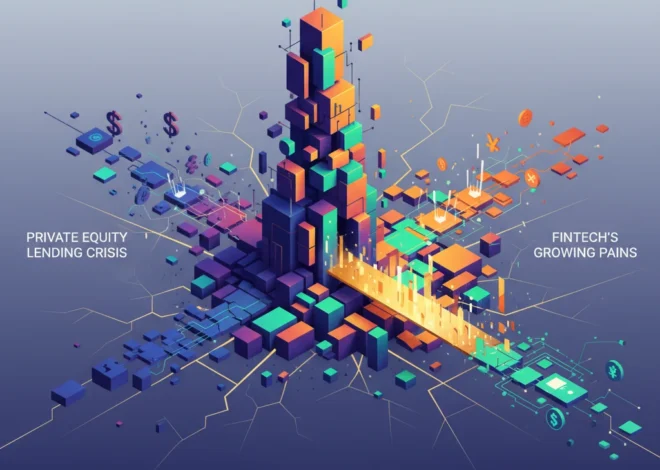
KKR’s Billion-Dollar Bet: Why This Private Equity Giant is Going All-In on India
In a global economy marked by turbulence and uncertainty, institutional investors are desperately seeking islands of stability and growth. For many, the compass is pointing decisively towards one destination: India. Spearheading this charge is the global investment behemoth KKR, which is not just dipping its toes but making a multi-billion-dollar splash, signaling a profound confidence in the nation’s future. This isn’t just another transaction; it’s a strategic affirmation that India’s time on the world’s economic stage has arrived.
According to a recent report from the Financial Times, KKR has committed a staggering $10 billion to the Indian market, a figure that underscores a deep-seated belief in the country’s long-term potential. This move comes as part of a broader trend where private equity giants are looking beyond traditional markets, and India, with its unique combination of demographic energy, digital innovation, and policy momentum, presents a compelling case for investment.
But what exactly is driving this capital deluge? Let’s delve deeper into KKR’s India playbook and explore the powerful undercurrents shaping the nation into a premier destination for global finance.
The Anatomy of a Mega-Bet: KKR’s Strategic Investments
KKR’s strategy in India is not a scattered, opportunistic approach. It’s a calculated and diversified portfolio designed to tap into the core pillars of the Indian growth story. The firm’s recent activities reveal a focus on sectors poised for exponential growth, from renewable energy to consumer retail and robust infrastructure.
Gaurav Trehan, KKR’s head of Asia-Pacific private equity and head of India, highlighted that the firm is deploying capital from its record $15 billion Asian fund, with India being a primary beneficiary. This isn’t just about passive investing; it’s about acquiring significant stakes and actively shaping the future of market-leading companies. By channeling funds into both established giants and emerging leaders, KKR is building a resilient portfolio that captures various facets of India’s evolving economy.
To better understand the scope of KKR’s involvement, let’s look at some of its key strategic bets in the Indian market:
| Company/Platform | Sector | Strategic Rationale & Impact on the Economy |
|---|---|---|
| Reliance Retail | Consumer Retail | Tapping into India’s massive and growing consumer base. This investment fuels expansion, enhances supply chains, and accelerates the shift from unorganized to organized retail, impacting the national economy. |
| Serentica Renewables | Renewable Energy | Supporting India’s green energy transition. This capital is crucial for building solar and wind projects, helping decarbonize heavy industries and meeting ambitious climate goals. |
| Highways Infrastructure Trust (HIT) | Infrastructure | Investing in the backbone of the nation. Funding roads and highways improves logistics, boosts trade, and creates jobs, which is fundamental for long-term economic growth. |
| Virescent Infrastructure | Renewable Energy Infrastructure | Another play on the clean energy theme, focusing on the acquisition and management of operational renewable assets, providing stable, long-term returns for investors. |
This diversified approach showcases a sophisticated understanding of where future value lies. It’s a bet on consumption, sustainability, and connectivity—the three engines that will power India’s journey to becoming a $5 trillion economy and beyond.
India's Energy Paradox: Why Green Power Can't Keep Pace with a Trillion-Dollar Economy
The “Why India, Why Now?” Thesis: A Confluence of Favorable Factors
KKR’s aggressive posture isn’t happening in a vacuum. It’s a direct response to a unique confluence of macroeconomic, geopolitical, and technological trends that make India one of the most attractive investment destinations today.
1. Macroeconomic Resilience and Policy Stability
While major economies grapple with recessionary fears and volatile inflation, India has demonstrated remarkable resilience. With a GDP growth rate projected to be among the highest for major economies, the country offers a rare combination of scale and dynamism. Proactive government policies, including the Goods and Services Tax (GST) and the Production-Linked Incentive (PLI) scheme, have streamlined the business environment and are attracting manufacturing, strengthening the fundamentals of the Indian stock market and overall economics.
2. The Digital Public Infrastructure (DPI) Revolution
Perhaps the most transformative element is India’s world-class digital backbone. The “India Stack,” a set of APIs including Aadhaar (biometric ID), UPI (payments), and DigiLocker (document storage), has been a game-changer. This has supercharged the fintech and financial technology sectors, enabling financial inclusion and innovation at an unprecedented scale. For investors like KKR, this digital ecosystem dramatically reduces friction, creates massive datasets for analysis, and allows companies to scale services to hundreds of millions of users with incredible efficiency. This robust digital framework is also a fertile ground for future innovations, potentially involving blockchain for secure and transparent trading and transactions.
3. Geopolitical Tailwinds: The “China Plus One” Strategy
Global corporations are actively diversifying their supply chains away from a heavy reliance on China. This “China Plus One” strategy positions India as a primary beneficiary. With its large, skilled workforce and improving infrastructure, India is emerging as a credible alternative for global manufacturing and services. The Indian government’s efforts to improve regional diplomatic ties, as noted in the FT’s newsletter about mending fences with its neighbors, further enhances its reputation as a stable and reliable partner in an increasingly fragmented world. This stability is a non-negotiable prerequisite for long-term capital commitment.
Beyond the Arch: Deconstructing the Economics of Monumental Ambition
Implications for the Broader Financial Ecosystem
KKR’s amplified focus on India sends powerful ripples across the entire financial landscape, impacting everything from local entrepreneurship to global investment allocations.
For the Indian Economy
This influx of patient, long-term private capital is a massive boon. It provides the fuel for capital-intensive sectors like infrastructure and clean energy, which the government cannot fund alone. It professionalizes family-run businesses, introducing global best practices in governance, management, and technology. This, in turn, spurs job creation, enhances competitiveness, and has a multiplier effect on the broader economy. The sophisticated financial instruments and strategies brought by firms like KKR also deepen the domestic finance and banking sectors.
For Global Investors
KKR’s actions serve as a powerful validation of the India growth story. For other institutional investors, pension funds, and sovereign wealth funds, it reinforces the need to have a meaningful allocation to India. It signals that the risk-reward profile has shifted favorably and that the market has matured to the point where it can absorb and productively deploy large-scale capital. This can trigger a cascading effect, drawing even more foreign direct investment (FDI) into the country.
For the Private Equity Industry
The move raises the stakes for competitors like Blackstone, Carlyle, and Bain Capital, all of whom have a significant presence in India. The competition for high-quality assets will intensify, potentially driving valuations even higher. Success will increasingly depend on deep sectoral expertise, strong local networks, and the ability to add tangible operational value beyond just providing capital.
Navigating the Path Ahead: A Conclusion of Cautious Optimism
KKR’s decision to double down on India is more than just a financial transaction; it’s a strategic endorsement of a nation on the move. It’s a bet on a young, aspirational population, a government committed to reform, and a technological landscape that is leapfrogging the world.
However, the path is not without its challenges. Bureaucratic hurdles, infrastructure gaps, and the ever-present potential for political shifts remain real risks. But the direction of travel is unmistakably positive. The combination of domestic momentum and favorable global tailwinds has created a once-in-a-generation opportunity for investing.
As KKR deploys its billions, the world will be watching. The success of these investments will not only shape the future of the firm but will also serve as a bellwether for India’s journey to becoming a true global economic powerhouse. For now, the message from one of the world’s smartest investors is clear: the smart money is on India.
The £100 Billion Idea: A Simple Fix to Supercharge Britain's Stagnant Economy

